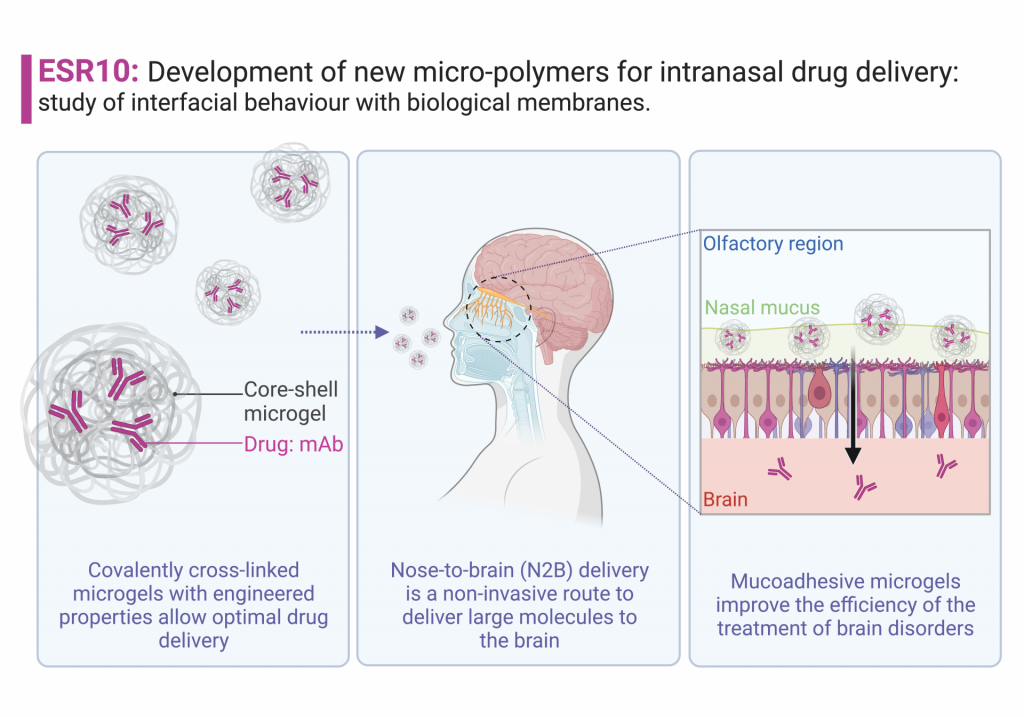The project developed by ESR10 aims at understanding the relationship between the chemical structure of polymeric nanogels and their interfacial behaviour with membranes. The design of carrier systems with optimal permeation requires a detailed understanding of the interactions of these materials with the biological interface, such as the nasal membrane.
Nanogels are crosslinked polymeric structures characterised by high surface-to-volume ratio, low polydispersity and the ability to form stable colloidal solutions. Recent studies suggest that nanogels are promising candidates for delivering drugs from Nose-to-Brain (N2B). In this project, a library of nanogels will be prepared via high dilution radical polymerisation, with percentages of crosslinkers ranging from 2.5% to 30% and using a variety of functional monomers. The effect of temperature and medium will be evaluated to obtain nanogels with the required properties.
The particles will be fully characterised in terms of size, surface morphology, charge, surface functional groups, spectral properties (absorbance), and mucoadhesiveness either in aqueous solutions, buffers, or artificial nasal fluids. A number of standard techniques and more advanced and specialized approaches will be developed, including scattering techniques (DLS and SAXS), microscopy (cryo-TEM, AFM, SEM), nuclear magnetic resonance (NMR), and surface tensiometry.
Finally, the study of the interfacial behaviour between nanogels and biological membranes will be performed by using neutron reflectivity and small angle neutron scattering with both mono-layers and multi bilayers systems designed to mimic biological membranes.
